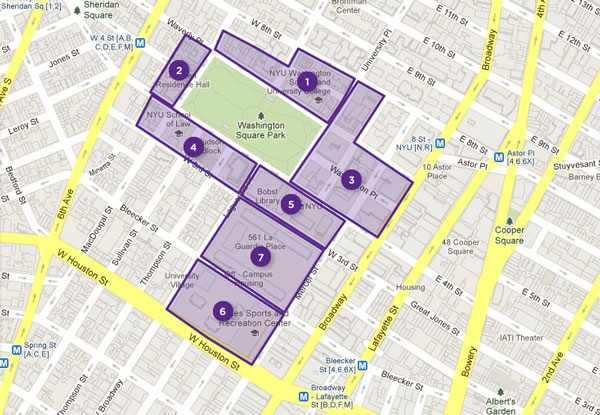BY YANNIC RACK | At the end of June, opponents of the N.Y.U. 2031 mega-development plan were dealt a crushing blow, as the state’s high court ruled in favor of the university’s expansion project.
The project calls for adding four new buildings onto N.Y.U.’s two South Village superblocks, between W. Houston and W. Third Sts. and LaGuardia Place and Mercer St.
There was an equal amount of outrage directed against the sale of those same blocks more than half a century ago.
As The Villager reported on Aug. 11, 1955, the nine square blocks south of Washington Square Park were sold at a city auction as three separate superblocks. This area had been designated for redevelopment by the Mayor’s Commission on Slum Clearance two years earlier.
“The land will be cleared by the City to make way for two developments as part of the over-all Washington Square Southeast Project,” The Villager article stated.
“It is reported that the ‘educational’ tract went to N.Y.U. for about $1,200,000. The larger ‘housing’ tract went to Washington Square Village Corp. for about $5,246,000. These two were the only bidders.”
The university’s northern superblock eventually became the site of several buildings, including Bobst Library and Stern School of Business.
The two southern parcels were slated for housing projects. But after the new buildings’ apartments sold poorly, the university acquired them from developers Tishman & Wolfe in 1960 and 1964.
Locals were outraged. Among officials speaking out against the takeover were the local congressman, assemblyman and presidents of both the Greenwich Village Association and the Village Independent Democrats.
Under the current N.Y.U. plan, the central block — home to Washington Square Village — is earmarked to get two new buildings.
On the southern block, which includes Silver Towers and 505 LaGuardia Place, another two additions are planned, including the massive “Zipper Building.”
The project’s foes have been trying to save the open-space strips along LaGuardia Place and Mercer St., so far in vain.
Back in ’55, the remaining residents of the old tenements on those blocks, as well as around 1,100 small businesses, would be displaced by the project.
“Sympathy is all that a House subcommittee could offer the residents and small business proprietors yesterday as the Washington Square Southeast Project was finally adjudged valid,” was the lede of a front-page article in The Villager on Aug. 4, 1955, a week before the auction.


















